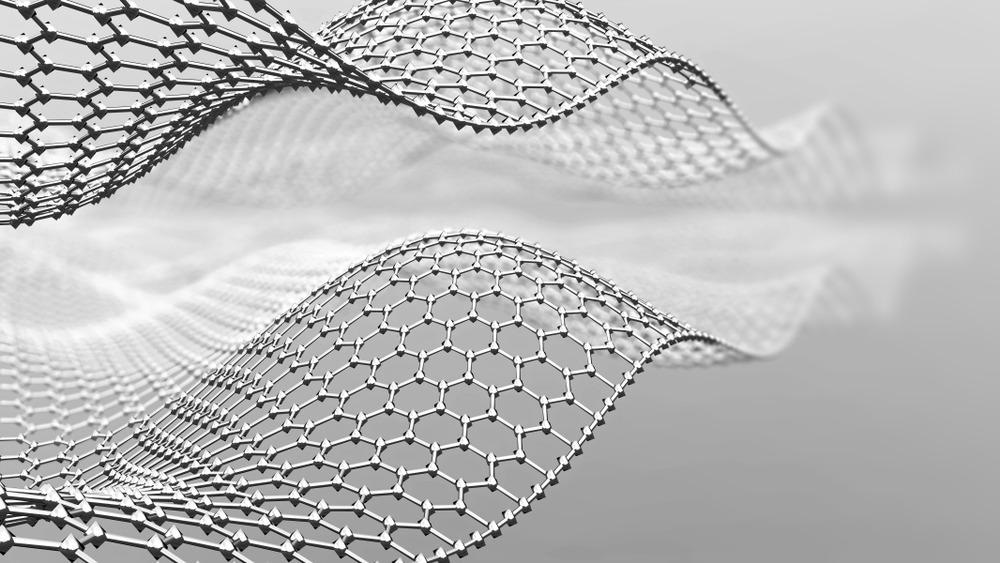In a recent study published in the journal ASN Nano, researchers from China developed a bio-inspired graphene composite coating to improve anti-corrosion properties in steel.

Study: Bio-inspired Multifunctional Graphene–Epoxy Anticorrosion Coatings by Low-Defect Engineered Graphene. Image Credit: Neon_dust/Shutterstock.com
Graphene and Corrosion
Metallic corrosion is a significant issue because it reduces public safety and results in massive annual economic losses. Organic coating (OC) is widely used to prevent metal corrosion because it has high validity and ease of implementation. However, the pure OC systems cannot provide improved performance due to factors such as corrosion resistance and electrical and thermal conductivities.
Graphene is a two-dimensional carbon nanomaterial with high electric, mechanical, thermal, and chemical properties. Graphene is considered an ideal anti-corrosion filler, yet some critical issues for the application of graphene are unsolved, preventing its use in metal protection.
A scalable spraying approach was used in the recent study to produce a bio-inspired multilayered graphene-epoxy composite coating. The coating was developed by low defect graphene as filler material and bio-inspired from the structure of the nacre.
Methodology
The corrosion substrate used by the researchers was Q235 (Q is the yield point of steel in Mpa) steel. The samples of Q235 had an exposed region of 1 cm X 1 cm, and the remaining parts were sealed with epoxy resin. They also used commercial graphene (510 µm size), waterborne epoxy resin, curing agent, dopamine, and hydrochloride as a solvent to prepare the samples.
The researchers synthesized polydopamine modified graphene (PDA-G) using the methodology described in previous studies, during which the PDA-G slurry was mixed with distilled water and sonicated to produce a dispersion solution. Further, the epoxy and curing agents were mixed mechanically to make an aqueous coating.
The aqueous epoxy coating and dispersion of PDA-G were alternately painted on the steel surface through a spraying process. The epoxy coating formed the bottom and top layers during the spraying process, and the PDA-G content was kept constant. Finally, the resulting samples had a coating of five epoxy layers and four graphene layers.
The bio-inspired coating was similar to the structure of the nacre. It must be noted that nacre has an inorganic aragonite coating of 95 wt %, but the samples prepared by the researchers had an organic coating of 99.5 wt % polymer. The bio-inspired coating was named I-PDA-G-EP, and the epoxy and homogeneous samples were named PDA-G-EP.
The researchers used scanning electron microscopy (SEM), transmission electron microscopy (TEM), atomic force microscopic analysis (AFM), X-ray photoelectron spectroscopy (XPS), ultraviolet−visible spectroscopy (UV), and Raman spectroscopy for characterization. Electrochemical Impedance Spectroscopy analysis was conducted in the NaCl solutions, and the researchers developed Nyquist plots to evaluate the corrosion behaviors of the coatings.
Further, the thermal properties were also analyzed to study the bio-inspired coating and the thermal properties of developed samples.
Results
In the present study, the Raman spectroscopy results of PDA-G showed that the PDA application repaired the structural defects. Additionally, the ID-to-IG (intensity ratio of bands of spectroscopy) ratio was reduced from 0.18 for graphene to 0.06 for the PDA-G, which indicated that graphene's structural defects were also significantly reduced.
The SEM morphology of graphene before and after PDA decoration revealed that the PDA-G surface has an uneven surface with visible particles, whereas the PDA-G had a smooth and thin-layer structure. A larger diameter of the semicircle in the Nyquist plots indicated that I-PDA-G-EP had improved anti-corrosion properties
. Further, the semicircle diameters of the coatings showed a decreasing trend in the anti-corrosion property as the exposure time increased. These results can be attributed to aggressive species penetrating the coating matrix and weakening the barrier effect of the coating matrix.
Epoxy had a lower open-circuit potential value than the PDA-G-EP and I-PDA-G-EP composite coatings, indicating that the PDA-G sheets could effectively improve the anti-corrosion performance of epoxy coatings.
Electrochemical tests confirmed that the I-PDA-G-EP samples had increased coating resistance compared to the other samples, indicating the significance of bio-inspired coating. Further, the highly anisotropic graphene layers provided highly anisotropic thermal and electrical conductivities to the bio-inspired coating.
According to TEM images, the graphene had a transparent thin sheet-like texture and few wrinkles. However, the PDA-G had uneven and rougher surfaces with visible microparticles, which were less transparent.
Conclusions
In this study, the researchers used the polydopamine stacking healing method to develop a nacre-inspired composite coating with low-defect graphene. The I-PDA-G-EP with ordered structure overcomes the irregular orientation issue of conventional graphene-based composite coatings. Hence, the coating developed by the researchers was a high-performance, multifunctional anti-corrosion coating that had self-monitoring, self-healing, and improved thermal and electrical properties.
Disclaimer: The views expressed here are those of the author expressed in their private capacity and do not necessarily represent the views of AZoM.com Limited T/A AZoNetwork the owner and operator of this website. This disclaimer forms part of the Terms and conditions of use of this website.
Source:
Jiheng Ding, Hongran Zhao, and Haibin Yu; ACS Nano 2022 16 (1), 710-720. Bio-inspired Multifunctional Graphene–Epoxy Anticorrosion Coatings by Low-Defect Engineered Graphene https://pubs.acs.org/doi/abs/10.1021/acsnano.1c08228